Thoughts of surviving winter with chickens don’t have to send chills up your spine. There are only a few things that are critical to a backyard flock in cold temperatures: access to water, a nutritionally complete chicken feed and a dry, draft-free living space. Actively planning to ensure chickens have those resources is the key to cold weather comfort and safety. When effective litter and best management practices are used for waste management, caring for chickens in winter doesn’t require much effort.
WATER IS ESSENTIAL
Water is the essential nutrientin a chicken’s daily diet; it is required for regulating body temperature, digestion, growth and egg production. Chickens eat more in the winter to regulate their temperature and they require water to digest food- if water is frozen, they will not eat and cannot warm themselves properly.
NEVER KEEP WATER OR FOOD INSIDE THE CHICKEN COOP!
3 Solutions to frozen water:
1. Cookie Tin water heater: For less than $10 and 10 minutes, a water heater can be fashioned out of common household objects, which will keep water in plastic and metal waterers liquid in sub-zero temperatures. (limitation: electricity required)
DIY Cookie Tin Water Heater Instructions HERE
This is my preferred drinker, which is available HERE and HERE.
2. Poultry Nipple waterers: A variety of nipple water systems can be used to ensure a constant water supply, from a homemade system with a 5 gallon bucket with an aquarium heater to a commercially available unit with its own heating system. (electricity required)
3. Haul it: Without electricity to the coop, traditional waterers require changing frequently throughout the day to prevent freezing. They should be emptied or removed at dusk and returned to the flock first thing in the morning. It’s not the most efficient system, but ya gotta do what ya gotta do.
MOISTURE IS THE ENEMY
While access to drinking water is essential, ironically, water is also the enemy of chickens in winter. Most breeds tolerate cold extremely well, but freezing temperatures inside the coop in addition to moisture increases the risk of frostbite. Chickens generate a great deal of moisture from respiration (breathing) as well as from pooping as droppings consist of 85% water. If the windows of the coop have condensation on them in the morning, there is a problem. Either the litter type is ineffective, there is an unacceptable amount of poop in the coop, and/or a drinker is being kept inside the coop. NEVER KEEP FOOD OR WATER INSIDE THE CHICKEN COOP!
Read all about frostbite prevention and treatment here.
Frostbite is most likely to occur overnight in a cold, poorly ventilated coop where litter is damp and moisture from droppings and respiration cannot escape. Frostbite to combs, wattles, and toes is super painful and can interfere with fertility in roosters and egg production in hens. Roosters and breeds with single combs are at the greatest risk of frostbite. Much more about frostbite prevention and treatment here.
STRATEGIES FOR CONTROLLING MOISTURE:
If utilizing a hygrometer inside the chicken coop, the target relative humidity is 50-70%.
Use Droppings Boards
Droppings boards are essentially a shelf designed to collect chicken poop deposited overnight. The boards are scraped down every morning, and the poop is removed from the coop. The less poop inside the coop, the less moisture in the coop. Droppings also generate ammonia, which can be a respiratory hazard to the flock, particularly in a closed coop. When droppings boards are used, a major source of humidity & potential ammonia are eliminated.
I add thin layer of Sweet Coop® to the droppings boards to absorb any residual moisture after scraping.
Don’t Keep Water Inside the Coop!
Keep feed and drinkers OUT of the chicken coop! While controlling moisture from respiration and droppings is manageable with proper litter maintenance and droppings boards, it is impossible to keep ahead of the moisture curve with drinking water in the litter and chickens traipsing into the coop all day to eat, drink and poop.
As long as the flock is given access to water within an hour of daybreak, there is no need for water inside the coop. Chickens do not drink water at night- they sleep.
Use Sand for Litter
The use of sand as litter inside the chicken coop is an outstanding choice in the winter because it evaporates moisture more rapidly than other litter and stays drier as a result. Sand also retains warmth better than any other litter and given its high thermal mass, it will keep coop temperatures more stable than other litter types such as pine shavings.
*Never add wet sand to a coop or run if it cannot be fully dried prior to the onset of freezing temperatures. If you’re not already using sand for litter going into winter, you’ll have to wait until spring to make that change.**
Straw is not appropriate for use as litter for chickens. Learn why here.
Deep litter method?
I do not recommend the deep litter method for most backyard flocks. Deep litter is a method of chicken waste management that calls for droppings and organic litter materials to compost inside the chicken coop. There is a popular misconception that deep litter is the lazy man’s way of managing waste and heating the coop, it is not. Deep litter requires careful management, which includes stirring and monitoring moisture content and temperatures. The deep litter method implemented improperly can be a serious health hazard to the flock. Most backyard flocks are not large enough to produce the requisite manure mass to reach the required temperatures at the heart of the litter to execute this method safely. The litter should NOT be changed every few weeks, the process should NOT be started in winter, there should NOT be fewer than 4 inches of litter on the coop floor, diatomaceous earth (DE) should NEVER be used in the litter and chickens should NOT be relied upon to manage the litter. More information about the deep litter method here.
Insulation on coop roof.
INSULATE & ELIMINATE DRAFTS
Insulating is intended to retain radiant heat and reduce heat loss. Insulating a coop does NOT mean making it air-tight! If there are gaps in walls or around windows they should be sealed to prevent drafts.
Insulation must be hidden from chickens- otherwise they will eat it. Feed bags are a cost-effective choice for covering insulation. We insulate the roof of our 4’x6′ coop. The north and west-facing walls of the coop are protected from the wind by heavyweight plastic covering the run walls.
Chickens cannot retain the heat they naturally generate if their feathers are ruffled from drafts blowing on them while sleeping. Eliminate drafts and the chickens will keep themselves warm in a dry chicken coop.
Bales of straw or hay should NEVER be placed inside the chicken coop as insulation. Mold and fungus grow on them, and mites often live inside straw, creating a respiratory health disaster zone inside the coop; of particular concern is Aspergillosis (brooder pneumonia).
CREATE WIND-BREAKS
Covering run walls with 4 or 6 ml contractor’s plastic sheeting plastic or tarps can serve several purposes: it provides the flock with a warmer run by keeping rain, wind and snow out during the day and it can keep the coop warmer and draft-free at night, depending upon the location of the run relative to the coop. Furring strips should be nailed or screwed to the structure to ensure that the plastic remains in place. Staples are likely to fail in windy conditions. I use 6ml opaque sheeting and clear plastic sheeting for the front of the runs for glass-like visibility
Shown: contractor’s plastic sheeting
Contractor’s plastic and lathing secured with screws keeps moisture and drafts out of the winter chicken run.
Attach plastic to chicken run using screws and lathing.
ABOUT VENTILATION
At the most basic level, ventilation refers to the exchange of unhealthy air with clean air. Backyard coops should never have ammonia-laden air. Ventilation is more of a concern for birds kept in overcrowded, filthy commercial buildings 24/7 than backyard chickens overnight in a coop.
Don’t get caught up with this detail- backyard chickens do not spend all day and all night in the coop. The coop will be opened in the morning, the birds will leave the coop and plenty of fresh air will enter throughout the day through its doors.
DO AVOID DRAFTS inside the coop, however! Chickens cannot retain their impressive body heat with a draft ruffling their feathers. Close all windows and seal up any drafts.
VENTILATION vs CIRCULATION
Circulation refers to the movement of air to aid in TEMPERATURE REGULATION. This is a hot weather issue. Our prefab coop came with three functioning windows on two opposing walls that did not provide enough air circulation for temperature control/cooling in the summer, so…we cut more windows in the coop. The photo below shows the drop-down window we created above the pop door.
Windows on all 4 sides if the coop are IMPERATIVE in warm weather, but should be closed in freezing temps and any drafts eliminated from homemade windows.
A winter roost hood can be helpful in coops with high ceilings to retain heat close to the birds’ heads. This isn’t ordinary necessary unless you have chosen breeds with large combs & wattles vulnerable to frostbite.
This roost hood is made with styrofoam insulation boards. It should be protected from being pecked at by covering the sheets with duct tape.
THE HOT TOPIC: HEAT IN THE COOP
Wherever you live, your chickens will naturally acclimate to the changes in temperature from season to season. Regardless of where you come down on the issue of heating the chicken coop, please remember that a chicken’s physiology is not the same as a person’s. Our perception of how cold we would be in the coop at night is not the same as a chicken’s actual comfort level!
How a Chicken Regulates Body Temperature
A chicken is able to increase its body temperature by eating more in cold weather. Digestion creates internal heat, which radiates through the skin warming the air next to it, which is then trapped against its body by feathers.
Doc Brown is shown here keeping herself warm by fluffing out her feathers to trap warm air next to her body.
A chicken is also able to conserve body heat by restricting blood-flow to its comb, wattles and feet, the very parts of the body that give off excess heat in warm weather. Not only do they have mechanisms to keep themselves comfortable in the cold, they huddle together to keep each other comfortable and warm. Chickens are tiny furnaces, wrapped in down jackets!
Installing 2″x4″ boards instead of round roosts provides them with the ability to cover and warm their feet. I took the following photo inside the coop late at night after an all day snowstorm. The day’s high temperature was 18°F and the temperature outside at 11pm was 18°F. The temperature inside the coop was nearly 40°F! The combination of windbreaks, insulation, sand as litter and the chickens’ collective body heat all contribute to an extremely reasonable, comfortable and dry environment for the flick.
Never use a heat lamp! There is simply no way to make heat lamps completely safe with flying animals regardless of the number of chains/clamps/tethers or guards employed. There are countless ways heat lamps can cause fires. Feathers and dust are highly flammable- any scuffle inside the coop can send a chicken and/or feathers flying into a heat lamp, catching them on fire. There is no way to use a traditional heat lamp safely inside a chicken coop with flying animals.
Fires like this occur every year in coops and barns due to heat lamps installed with the best of intentions.
- If you must, only use a safe form of heat such as a flat panel, radiant heater. Only supply enough heat to raise the coop temperature a few degrees- the coop should not feel warm to you. Chickens are not served well by walking out of a toasty hen house into a freezing cold run. The more time they spend inside the coop, the more droppings accumulate inside the coop, the more moisture there is inside the coop, the less exercise they get, etc.
- Automatically regulate the use of electricity for supplemental lighting, or heated drinkers, cookie tin water heater by utilizing a device like the Thermo Cube, which will turn the power on at 35°F and off at 45°F. (there are other models that turn on at 0, off at 10, on at 20, off at 30)
Plan for power failure. If you do not have a generator to power a heat source to the coop during a blackout, do not heat the coop at all. Chickens have died and will die as a result of sudden drops in temperature from a power outage when the coop is heated.
“Perhaps we should have flown south for the winter?”
CHICKEN SWEATERS: Just say NO!
The average chicken does NOT NEED a sweater. I’m not trying to be the Fun Police, I’m all about taking eggcellent care of pet chickens and enjoy a little silliness with them from time-to-time, but I have long felt that chicken sweaters are not only unnecessary, they can be hazardous, here’s why:
1. A sweater prevents a chicken from keeping itself warm naturally. (see “How a chicken regulates body temperature,” above)
2. A sweater will trap moisture next to the chicken’s skin, which further impedes its ability to stay warm and encourages lice & mites to set up camp on feathers and skin.
3. A sweater is a painful proposition for a molting hen whose sensitive pin feathers are better left untouched.
4. A sweater prevents a chicken from maintaining their own hygiene; dust-bathing and preening their feathers are important to keeping parasite populations down and feathers in good working order.
5. A chicken sweater provides hawks with a handy carrying-case for a free-range chicken. Let’s not make their jobs any easier.
6. A roosters spurs or nails can get caught in a sweater while mating, which is a strangling hazard to the hen and dangerous for the rooster who cannot free himself.
The average molting chicken in winter does not need help to stay warm. Take the cute photo and then pack that sweater away with the Halloween costume she also finds irritating. (Battery hens that are primarily naked in cold weather may be an exception to the above, but even then, sweaters contribute more to making humans feel better about “doing something” for neglected birds than actually contributing to a bird’s well being.) In freezing temperatures, any backyard chicken that is molting and mostly un-feathered would be better served by an indoor dog crate in the basement or garage than a sweater.
OUTSIDE SHELTER
If the run is not currently covered, cover it. The run is the primary living space in inclement weather; a dry, draft-free area must be provided for eating, drinking, dust bathing. The bigger the chicken run, the better. A backyard coop is only for egg-laying and sleeping at night. All other activities should occur in the run. Chickens must be provided with adequate personal space to fend off boredom, obesityand avoid behavioral problems such as feather picking and egg-eating. The bare minimum space allocation in the run per bird is ten square feet.
Most chickens dislike walking in snow, but will venture out into a clear or shoveled area. Some chickens will brave the snow voluntarily, but don’t try to force, cajole, encourage or bribe them into going outside. Allow them the opportunity to wander out by leaving the door to a protected run open, but let them decide where they want to spend their time.
When temperatures are extreme (double-digits below zero) and/or freezing temps are accompanied by precipitation and/or wind, chickens should be confined to a completely winterized and covered run. Extreme cold in addition to wind/snow/rain puts chickens at risk forfrostbitten feet, combs and wattles. My New England flock appreciates a spacious run protected from the elements when it’s dangerously cold outside.
MISCELLANEOUS WINTER PREP TIPS
Clean It: The chicken coop and run should be deep-cleaned in autumn. Remove everything that is not permanently affixed and clean it well. Unless the deep litter method or sand are being used as coop litter, all of the litter and nesting material should be replaced.
Secure It: Autumn cleaning is a good time to re-assess the coop and run for breaches in security. Hardware cloth should be intact on windows and the run. Any hole bigger than 1/2 inch is a potential portal for predators and pests. Chicken wire should be replaced with hardware cloth Many predators can tear through chicken wire with ease.
Winter Weaponry: Round up the shovels and prime the snow-blower before they are needed and keep them in a convenient location.
Feed: Do t change their diet in winter! Chickens eat more layer feed in the cold than any other time of year to fuel their internal furnaces. As always, make feed available to them during all waking hours. They will keep themselves warm in a dry, draft-free environment using the calories from a nutritionally complete chicken feed. Nothing more, nothing less.
Boredom
In inclement weather, chickens that cannot access areas they are accustomed to frequenting (either the run or pasture because they are snow-covered) will quickly get bored, which can lead tofeather picking and cannibalism.
Add Enrichment Activities:
Add outdoor roosts, logs, stumps, flower pots full of potting soil and dust bathing areas. Give the birds a new playground that looks different from their fair-weather run. It’ll help them stay out of each others’ way and encourage exercise. Try not to rely upon snacks/treats for entertainment. A chicken’s primary job is EATING, but they require the nutritional balance from layer feed to support their health. Treats, even healthy treats or extras, dilute their diet, creating nutrient imbalance. So, use their chicken feed in different presentations, different containers, etc. to keep things interesting.
Cover the run with a roof so they can get out of the coop even in foul weather.
You can get a lot of bang for the entertainment buck with this foul weather dust bath hack!
Provide entertainment rarely in the form of pecking treats: Flock Block Substitute,
Our backyard pet chickens have fat reserves upon which to draw on cold nights; they are well fed, often over-fed. Treats and snacks are not beneficial, they can only interfere with the nutrient balance they require from their layer feed. Laying hens should not be “fattened up” for winter! Research demonstrates unequivocally that backyard chickens are dying from obesity-related complications, primarily Fatty Liver Hemorrhagic Syndrome and heat stroke from being fed dietary extras in addition to their layer feed.
Pet chickens are not wild birds that forage for meager rations, they are well fed daily. Chickens will increase their layer feed intake to supply any calories necessary to maintain their body temperatures. They do not benefit from high fat or high energy treats such as suet, scratch, or cracked corn, which will only create nutrient imbalance for them, causing all kinds of problems with their health, behavior, egg production, and inability to re-grow feathers properly.
*Give suet blocks to wild birds and save the pet chickens!*
Obesity is a far worse problem than boredom and too many treats over time is killing backyard chickens.
Egg Challenges
Frozen eggs: Collecting eggs frequently is the best way to avoid frozen eggs in very cold temperatures.Insulatingthe nest boxes can help with heat loss in between collections. Visit my blog article for a unique twist on keeping eggs from freezing here.
Dirty Eggs from Muddy Feet: The main cause of dirty eggs in winter is mud; mud in the run gets tracked into the nest boxes on feet and feathers, making eggs dirty. Keeping eggs clean at the source should be a priority.
- Don’t build new coops in low-lying, wet land, which will become muddy at the least bit of precipitation. Install drainage if necessary.
- Cover the run with a roof to keep rain and snow out. (also fabulous for shade in the heat of summer
- Use sand for litter in the coop and run. Among the many, wonderful benefits of sand is that it drains beautifully, eliminating the opportunity for water to puddle. Never add wet sand to a coop or run if it cannot be fully dried prior to the onset of freezing temperatures.
- Sand on floor of the coop. Feet get cleaned enroute to the nest boxes (think chicken pedicure!).
- Attach plastic sheeting to run walls to keep snow and rain from blowing in.
Important Note: This article does NOT pertain to the management of baby chicks. Chicks require special care, which includes a SAFE heat source since they are physically unable to regulate their body temperatures. For more about baby chick care, click here.
And finally, remember that spring is just around the corner!
Kathy Shea Mormino
Affectionately known internationally as The Chicken Chick®, Kathy Shea Mormino shares a fun-loving, informative style to raising backyard chickens. …Read on


shop my SPONSORS
Thoughts of surviving winter with chickens don’t have to send chills up your spine. There are only a few things that are critical to a backyard flock in cold temperatures: access to water, a nutritionally complete chicken feed and a dry, draft-free living space. Actively planning to ensure chickens have those resources is the key to cold weather comfort and safety. When effective litter and best management practices are used for waste management, caring for chickens in winter doesn’t require much effort.
WATER IS ESSENTIAL
Water is the essential nutrientin a chicken’s daily diet; it is required for regulating body temperature, digestion, growth and egg production. Chickens eat more in the winter to regulate their temperature and they require water to digest food- if water is frozen, they will not eat and cannot warm themselves properly.
NEVER KEEP WATER OR FOOD INSIDE THE CHICKEN COOP!
3 Solutions to frozen water:
1. Cookie Tin water heater: For less than $10 and 10 minutes, a water heater can be fashioned out of common household objects, which will keep water in plastic and metal waterers liquid in sub-zero temperatures. (limitation: electricity required)
DIY Cookie Tin Water Heater Instructions HERE
This is my preferred drinker, which is available HERE and HERE.
2. Poultry Nipple waterers: A variety of nipple water systems can be used to ensure a constant water supply, from a homemade system with a 5 gallon bucket with an aquarium heater to a commercially available unit with its own heating system. (electricity required)
3. Haul it: Without electricity to the coop, traditional waterers require changing frequently throughout the day to prevent freezing. They should be emptied or removed at dusk and returned to the flock first thing in the morning. It’s not the most efficient system, but ya gotta do what ya gotta do.
MOISTURE IS THE ENEMY
While access to drinking water is essential, ironically, water is also the enemy of chickens in winter. Most breeds tolerate cold extremely well, but freezing temperatures inside the coop in addition to moisture increases the risk of frostbite. Chickens generate a great deal of moisture from respiration (breathing) as well as from pooping as droppings consist of 85% water. If the windows of the coop have condensation on them in the morning, there is a problem. Either the litter type is ineffective, there is an unacceptable amount of poop in the coop, and/or a drinker is being kept inside the coop. NEVER KEEP FOOD OR WATER INSIDE THE CHICKEN COOP!
Read all about frostbite prevention and treatment here.
Frostbite is most likely to occur overnight in a cold, poorly ventilated coop where litter is damp and moisture from droppings and respiration cannot escape. Frostbite to combs, wattles, and toes is super painful and can interfere with fertility in roosters and egg production in hens. Roosters and breeds with single combs are at the greatest risk of frostbite. Much more about frostbite prevention and treatment here.
STRATEGIES FOR CONTROLLING MOISTURE:
If utilizing a hygrometer inside the chicken coop, the target relative humidity is 50-70%.
Use Droppings Boards
Droppings boards are essentially a shelf designed to collect chicken poop deposited overnight. The boards are scraped down every morning, and the poop is removed from the coop. The less poop inside the coop, the less moisture in the coop. Droppings also generate ammonia, which can be a respiratory hazard to the flock, particularly in a closed coop. When droppings boards are used, a major source of humidity & potential ammonia are eliminated.
I add thin layer of Sweet Coop® to the droppings boards to absorb any residual moisture after scraping.
Don’t Keep Water Inside the Coop!
Keep feed and drinkers OUT of the chicken coop! While controlling moisture from respiration and droppings is manageable with proper litter maintenance and droppings boards, it is impossible to keep ahead of the moisture curve with drinking water in the litter and chickens traipsing into the coop all day to eat, drink and poop.
As long as the flock is given access to water within an hour of daybreak, there is no need for water inside the coop. Chickens do not drink water at night- they sleep.
Use Sand for Litter
The use of sand as litter inside the chicken coop is an outstanding choice in the winter because it evaporates moisture more rapidly than other litter and stays drier as a result. Sand also retains warmth better than any other litter and given its high thermal mass, it will keep coop temperatures more stable than other litter types such as pine shavings.
*Never add wet sand to a coop or run if it cannot be fully dried prior to the onset of freezing temperatures. If you’re not already using sand for litter going into winter, you’ll have to wait until spring to make that change.**
Straw is not appropriate for use as litter for chickens. Learn why here.
Deep litter method?
I do not recommend the deep litter method for most backyard flocks. Deep litter is a method of chicken waste management that calls for droppings and organic litter materials to compost inside the chicken coop. There is a popular misconception that deep litter is the lazy man’s way of managing waste and heating the coop, it is not. Deep litter requires careful management, which includes stirring and monitoring moisture content and temperatures. The deep litter method implemented improperly can be a serious health hazard to the flock. Most backyard flocks are not large enough to produce the requisite manure mass to reach the required temperatures at the heart of the litter to execute this method safely. The litter should NOT be changed every few weeks, the process should NOT be started in winter, there should NOT be fewer than 4 inches of litter on the coop floor, diatomaceous earth (DE) should NEVER be used in the litter and chickens should NOT be relied upon to manage the litter. More information about the deep litter method here.
Insulation on coop roof.
INSULATE & ELIMINATE DRAFTS
Insulating is intended to retain radiant heat and reduce heat loss. Insulating a coop does NOT mean making it air-tight! If there are gaps in walls or around windows they should be sealed to prevent drafts.
Insulation must be hidden from chickens- otherwise they will eat it. Feed bags are a cost-effective choice for covering insulation. We insulate the roof of our 4’x6′ coop. The north and west-facing walls of the coop are protected from the wind by heavyweight plastic covering the run walls.
Chickens cannot retain the heat they naturally generate if their feathers are ruffled from drafts blowing on them while sleeping. Eliminate drafts and the chickens will keep themselves warm in a dry chicken coop.
Bales of straw or hay should NEVER be placed inside the chicken coop as insulation. Mold and fungus grow on them, and mites often live inside straw, creating a respiratory health disaster zone inside the coop; of particular concern is Aspergillosis (brooder pneumonia).
CREATE WIND-BREAKS
Covering run walls with 4 or 6 ml contractor’s plastic sheeting plastic or tarps can serve several purposes: it provides the flock with a warmer run by keeping rain, wind and snow out during the day and it can keep the coop warmer and draft-free at night, depending upon the location of the run relative to the coop. Furring strips should be nailed or screwed to the structure to ensure that the plastic remains in place. Staples are likely to fail in windy conditions. I use 6ml opaque sheeting and clear plastic sheeting for the front of the runs for glass-like visibility
Shown: contractor’s plastic sheeting
Contractor’s plastic and lathing secured with screws keeps moisture and drafts out of the winter chicken run.
Attach plastic to chicken run using screws and lathing.
ABOUT VENTILATION
At the most basic level, ventilation refers to the exchange of unhealthy air with clean air. Backyard coops should never have ammonia-laden air. Ventilation is more of a concern for birds kept in overcrowded, filthy commercial buildings 24/7 than backyard chickens overnight in a coop.
Don’t get caught up with this detail- backyard chickens do not spend all day and all night in the coop. The coop will be opened in the morning, the birds will leave the coop and plenty of fresh air will enter throughout the day through its doors.
DO AVOID DRAFTS inside the coop, however! Chickens cannot retain their impressive body heat with a draft ruffling their feathers. Close all windows and seal up any drafts.
VENTILATION vs CIRCULATION
Circulation refers to the movement of air to aid in TEMPERATURE REGULATION. This is a hot weather issue. Our prefab coop came with three functioning windows on two opposing walls that did not provide enough air circulation for temperature control/cooling in the summer, so…we cut more windows in the coop. The photo below shows the drop-down window we created above the pop door.
Windows on all 4 sides if the coop are IMPERATIVE in warm weather, but should be closed in freezing temps and any drafts eliminated from homemade windows.
A winter roost hood can be helpful in coops with high ceilings to retain heat close to the birds’ heads. This isn’t ordinary necessary unless you have chosen breeds with large combs & wattles vulnerable to frostbite.
This roost hood is made with styrofoam insulation boards. It should be protected from being pecked at by covering the sheets with duct tape.
THE HOT TOPIC: HEAT IN THE COOP
Wherever you live, your chickens will naturally acclimate to the changes in temperature from season to season. Regardless of where you come down on the issue of heating the chicken coop, please remember that a chicken’s physiology is not the same as a person’s. Our perception of how cold we would be in the coop at night is not the same as a chicken’s actual comfort level!
How a Chicken Regulates Body Temperature
A chicken is able to increase its body temperature by eating more in cold weather. Digestion creates internal heat, which radiates through the skin warming the air next to it, which is then trapped against its body by feathers.
Doc Brown is shown here keeping herself warm by fluffing out her feathers to trap warm air next to her body.
A chicken is also able to conserve body heat by restricting blood-flow to its comb, wattles and feet, the very parts of the body that give off excess heat in warm weather. Not only do they have mechanisms to keep themselves comfortable in the cold, they huddle together to keep each other comfortable and warm. Chickens are tiny furnaces, wrapped in down jackets!
Installing 2″x4″ boards instead of round roosts provides them with the ability to cover and warm their feet. I took the following photo inside the coop late at night after an all day snowstorm. The day’s high temperature was 18°F and the temperature outside at 11pm was 18°F. The temperature inside the coop was nearly 40°F! The combination of windbreaks, insulation, sand as litter and the chickens’ collective body heat all contribute to an extremely reasonable, comfortable and dry environment for the flick.
Never use a heat lamp! There is simply no way to make heat lamps completely safe with flying animals regardless of the number of chains/clamps/tethers or guards employed. There are countless ways heat lamps can cause fires. Feathers and dust are highly flammable- any scuffle inside the coop can send a chicken and/or feathers flying into a heat lamp, catching them on fire. There is no way to use a traditional heat lamp safely inside a chicken coop with flying animals.
Fires like this occur every year in coops and barns due to heat lamps installed with the best of intentions.
- If you must, only use a safe form of heat such as a flat panel, radiant heater. Only supply enough heat to raise the coop temperature a few degrees- the coop should not feel warm to you. Chickens are not served well by walking out of a toasty hen house into a freezing cold run. The more time they spend inside the coop, the more droppings accumulate inside the coop, the more moisture there is inside the coop, the less exercise they get, etc.
- Automatically regulate the use of electricity for supplemental lighting, or heated drinkers, cookie tin water heater by utilizing a device like the Thermo Cube, which will turn the power on at 35°F and off at 45°F. (there are other models that turn on at 0, off at 10, on at 20, off at 30)
Plan for power failure. If you do not have a generator to power a heat source to the coop during a blackout, do not heat the coop at all. Chickens have died and will die as a result of sudden drops in temperature from a power outage when the coop is heated.
“Perhaps we should have flown south for the winter?”
CHICKEN SWEATERS: Just say NO!
The average chicken does NOT NEED a sweater. I’m not trying to be the Fun Police, I’m all about taking eggcellent care of pet chickens and enjoy a little silliness with them from time-to-time, but I have long felt that chicken sweaters are not only unnecessary, they can be hazardous, here’s why:
1. A sweater prevents a chicken from keeping itself warm naturally. (see “How a chicken regulates body temperature,” above)
2. A sweater will trap moisture next to the chicken’s skin, which further impedes its ability to stay warm and encourages lice & mites to set up camp on feathers and skin.
3. A sweater is a painful proposition for a molting hen whose sensitive pin feathers are better left untouched.
4. A sweater prevents a chicken from maintaining their own hygiene; dust-bathing and preening their feathers are important to keeping parasite populations down and feathers in good working order.
5. A chicken sweater provides hawks with a handy carrying-case for a free-range chicken. Let’s not make their jobs any easier.
6. A roosters spurs or nails can get caught in a sweater while mating, which is a strangling hazard to the hen and dangerous for the rooster who cannot free himself.
The average molting chicken in winter does not need help to stay warm. Take the cute photo and then pack that sweater away with the Halloween costume she also finds irritating. (Battery hens that are primarily naked in cold weather may be an exception to the above, but even then, sweaters contribute more to making humans feel better about “doing something” for neglected birds than actually contributing to a bird’s well being.) In freezing temperatures, any backyard chicken that is molting and mostly un-feathered would be better served by an indoor dog crate in the basement or garage than a sweater.
OUTSIDE SHELTER
If the run is not currently covered, cover it. The run is the primary living space in inclement weather; a dry, draft-free area must be provided for eating, drinking, dust bathing. The bigger the chicken run, the better. A backyard coop is only for egg-laying and sleeping at night. All other activities should occur in the run. Chickens must be provided with adequate personal space to fend off boredom, obesityand avoid behavioral problems such as feather picking and egg-eating. The bare minimum space allocation in the run per bird is ten square feet.
Most chickens dislike walking in snow, but will venture out into a clear or shoveled area. Some chickens will brave the snow voluntarily, but don’t try to force, cajole, encourage or bribe them into going outside. Allow them the opportunity to wander out by leaving the door to a protected run open, but let them decide where they want to spend their time.
When temperatures are extreme (double-digits below zero) and/or freezing temps are accompanied by precipitation and/or wind, chickens should be confined to a completely winterized and covered run. Extreme cold in addition to wind/snow/rain puts chickens at risk forfrostbitten feet, combs and wattles. My New England flock appreciates a spacious run protected from the elements when it’s dangerously cold outside.
MISCELLANEOUS WINTER PREP TIPS
Clean It: The chicken coop and run should be deep-cleaned in autumn. Remove everything that is not permanently affixed and clean it well. Unless the deep litter method or sand are being used as coop litter, all of the litter and nesting material should be replaced.
Secure It: Autumn cleaning is a good time to re-assess the coop and run for breaches in security. Hardware cloth should be intact on windows and the run. Any hole bigger than 1/2 inch is a potential portal for predators and pests. Chicken wire should be replaced with hardware cloth Many predators can tear through chicken wire with ease.
Winter Weaponry: Round up the shovels and prime the snow-blower before they are needed and keep them in a convenient location.
Feed: Do t change their diet in winter! Chickens eat more layer feed in the cold than any other time of year to fuel their internal furnaces. As always, make feed available to them during all waking hours. They will keep themselves warm in a dry, draft-free environment using the calories from a nutritionally complete chicken feed. Nothing more, nothing less.
Boredom
In inclement weather, chickens that cannot access areas they are accustomed to frequenting (either the run or pasture because they are snow-covered) will quickly get bored, which can lead tofeather picking and cannibalism.
Add Enrichment Activities:
Add outdoor roosts, logs, stumps, flower pots full of potting soil and dust bathing areas. Give the birds a new playground that looks different from their fair-weather run. It’ll help them stay out of each others’ way and encourage exercise. Try not to rely upon snacks/treats for entertainment. A chicken’s primary job is EATING, but they require the nutritional balance from layer feed to support their health. Treats, even healthy treats or extras, dilute their diet, creating nutrient imbalance. So, use their chicken feed in different presentations, different containers, etc. to keep things interesting.
Cover the run with a roof so they can get out of the coop even in foul weather.
You can get a lot of bang for the entertainment buck with this foul weather dust bath hack!
Provide entertainment rarely in the form of pecking treats: Flock Block Substitute,
Our backyard pet chickens have fat reserves upon which to draw on cold nights; they are well fed, often over-fed. Treats and snacks are not beneficial, they can only interfere with the nutrient balance they require from their layer feed. Laying hens should not be “fattened up” for winter! Research demonstrates unequivocally that backyard chickens are dying from obesity-related complications, primarily Fatty Liver Hemorrhagic Syndrome and heat stroke from being fed dietary extras in addition to their layer feed.
Pet chickens are not wild birds that forage for meager rations, they are well fed daily. Chickens will increase their layer feed intake to supply any calories necessary to maintain their body temperatures. They do not benefit from high fat or high energy treats such as suet, scratch, or cracked corn, which will only create nutrient imbalance for them, causing all kinds of problems with their health, behavior, egg production, and inability to re-grow feathers properly.
*Give suet blocks to wild birds and save the pet chickens!*
Obesity is a far worse problem than boredom and too many treats over time is killing backyard chickens.
Egg Challenges
Frozen eggs: Collecting eggs frequently is the best way to avoid frozen eggs in very cold temperatures.Insulatingthe nest boxes can help with heat loss in between collections. Visit my blog article for a unique twist on keeping eggs from freezing here.
Dirty Eggs from Muddy Feet: The main cause of dirty eggs in winter is mud; mud in the run gets tracked into the nest boxes on feet and feathers, making eggs dirty. Keeping eggs clean at the source should be a priority.
- Don’t build new coops in low-lying, wet land, which will become muddy at the least bit of precipitation. Install drainage if necessary.
- Cover the run with a roof to keep rain and snow out. (also fabulous for shade in the heat of summer
- Use sand for litter in the coop and run. Among the many, wonderful benefits of sand is that it drains beautifully, eliminating the opportunity for water to puddle. Never add wet sand to a coop or run if it cannot be fully dried prior to the onset of freezing temperatures.
- Sand on floor of the coop. Feet get cleaned enroute to the nest boxes (think chicken pedicure!).
- Attach plastic sheeting to run walls to keep snow and rain from blowing in.
Important Note: This article does NOT pertain to the management of baby chicks. Chicks require special care, which includes a SAFE heat source since they are physically unable to regulate their body temperatures. For more about baby chick care, click here.
And finally, remember that spring is just around the corner!



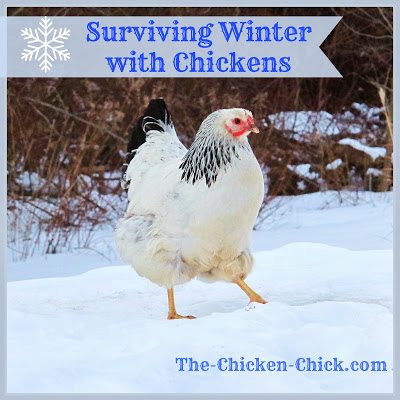

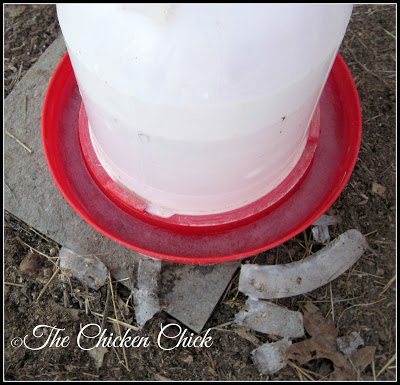
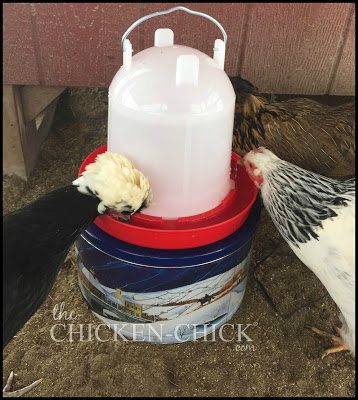
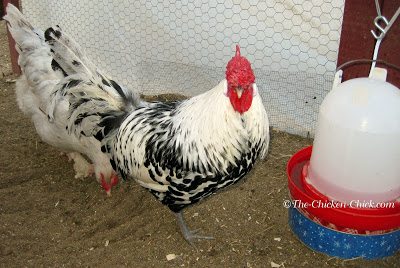
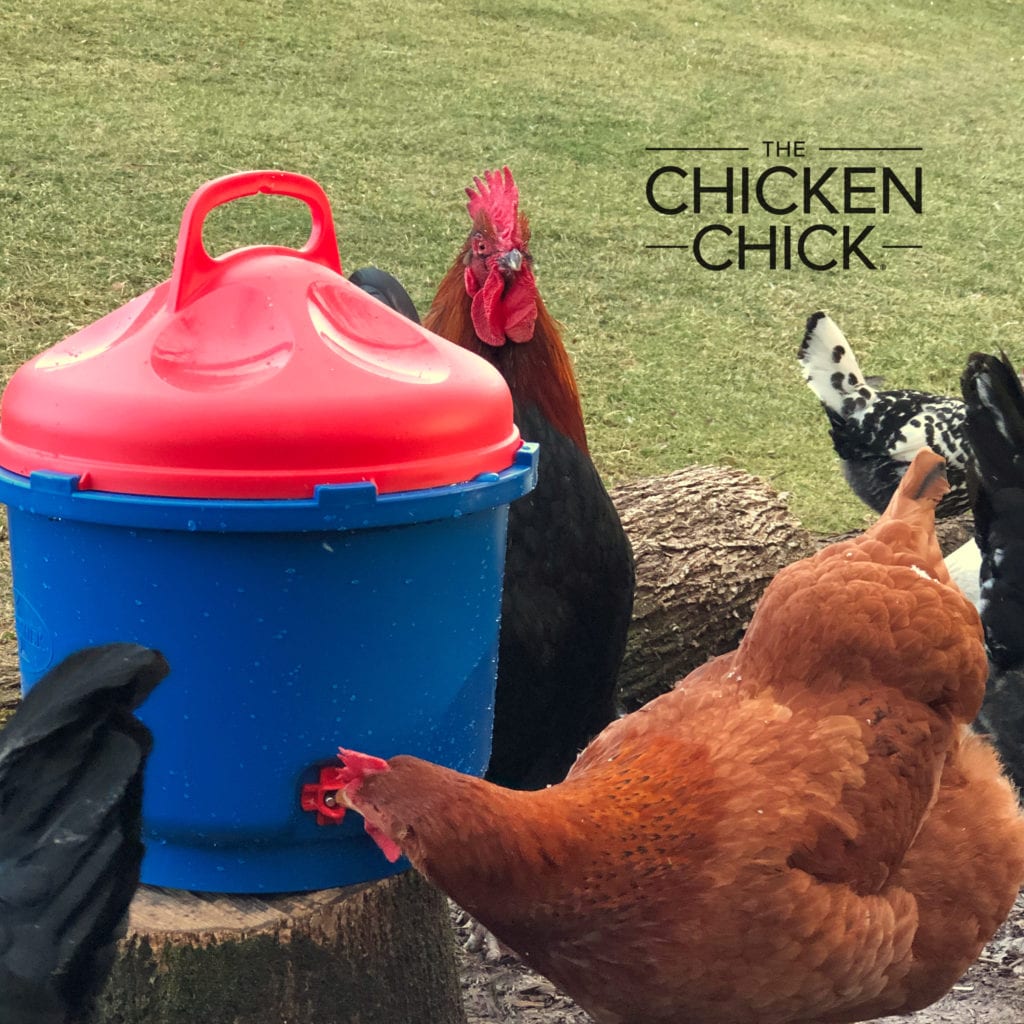

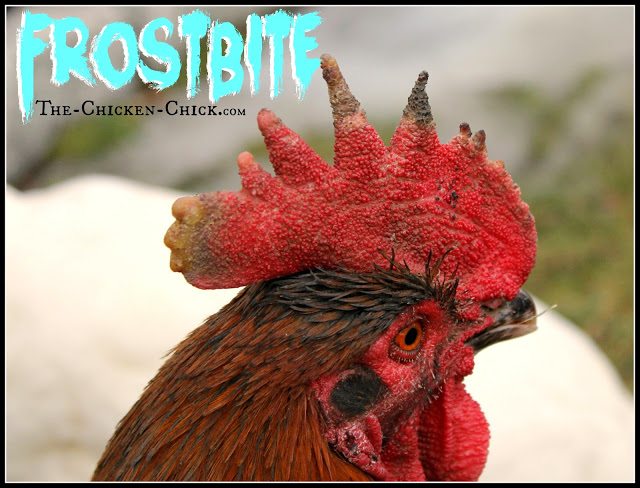
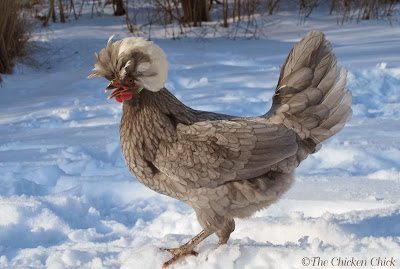
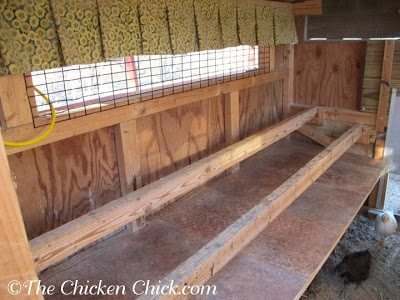
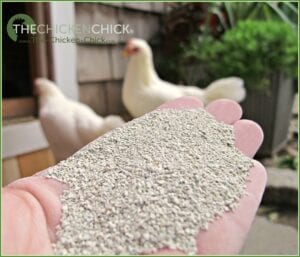

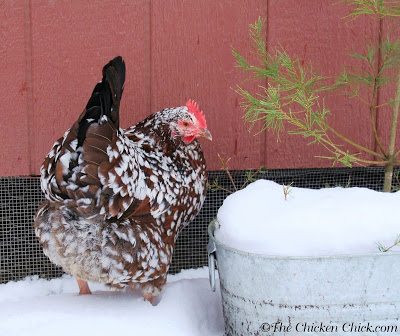
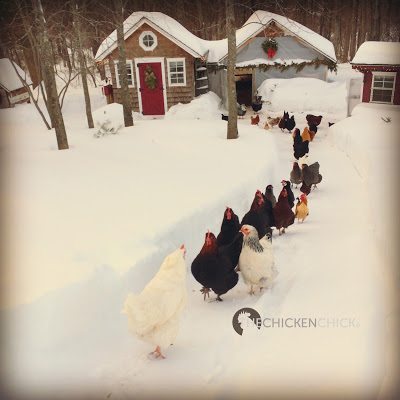
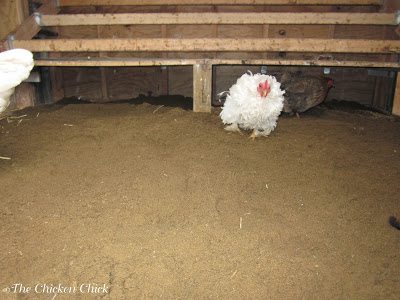
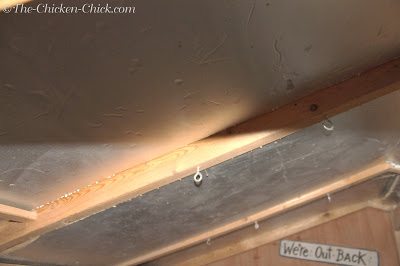
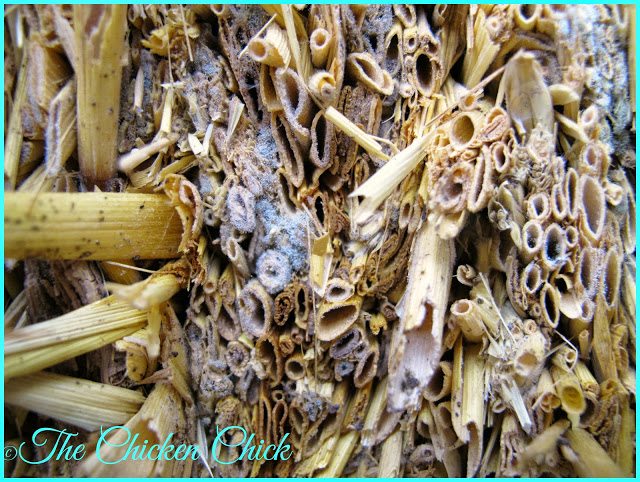
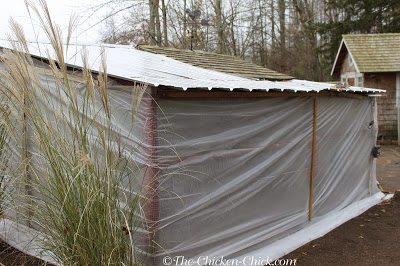
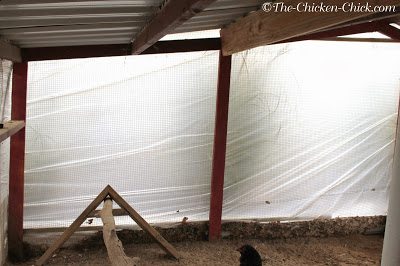
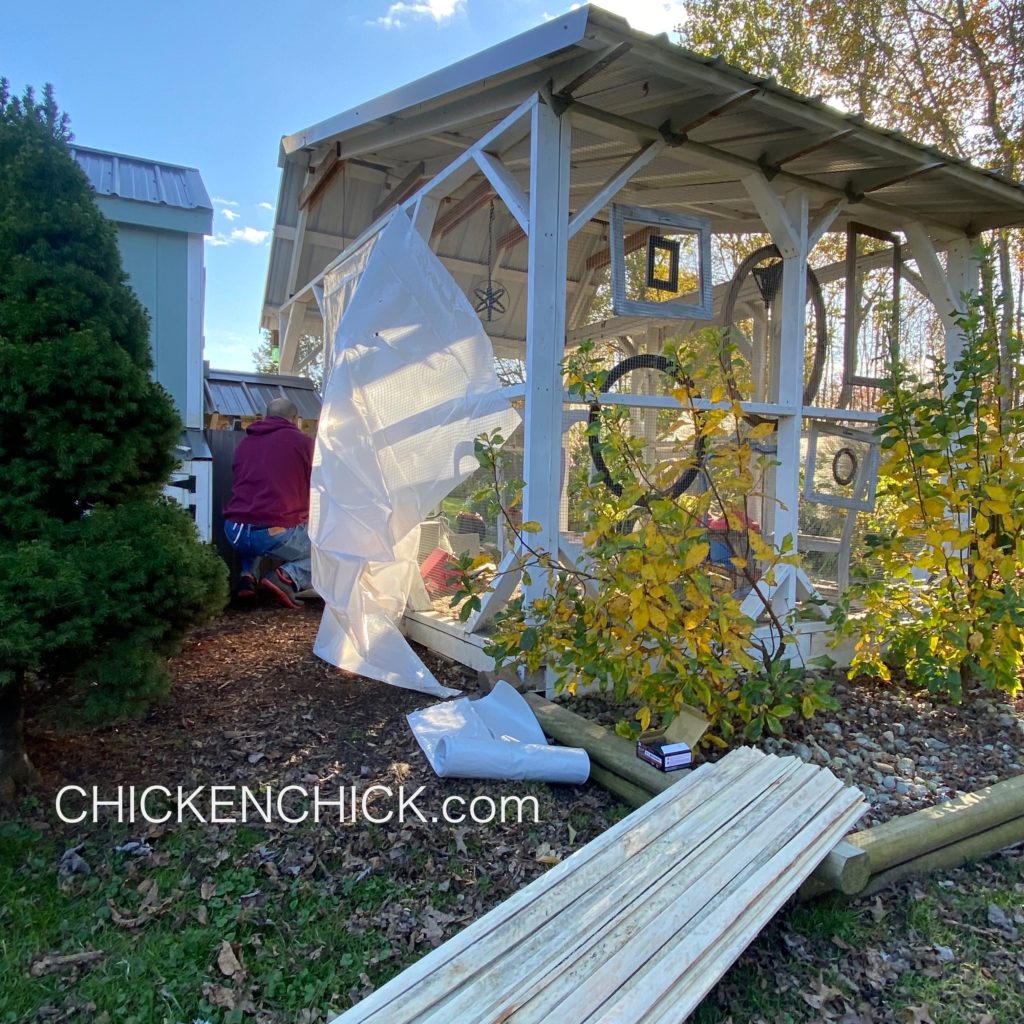
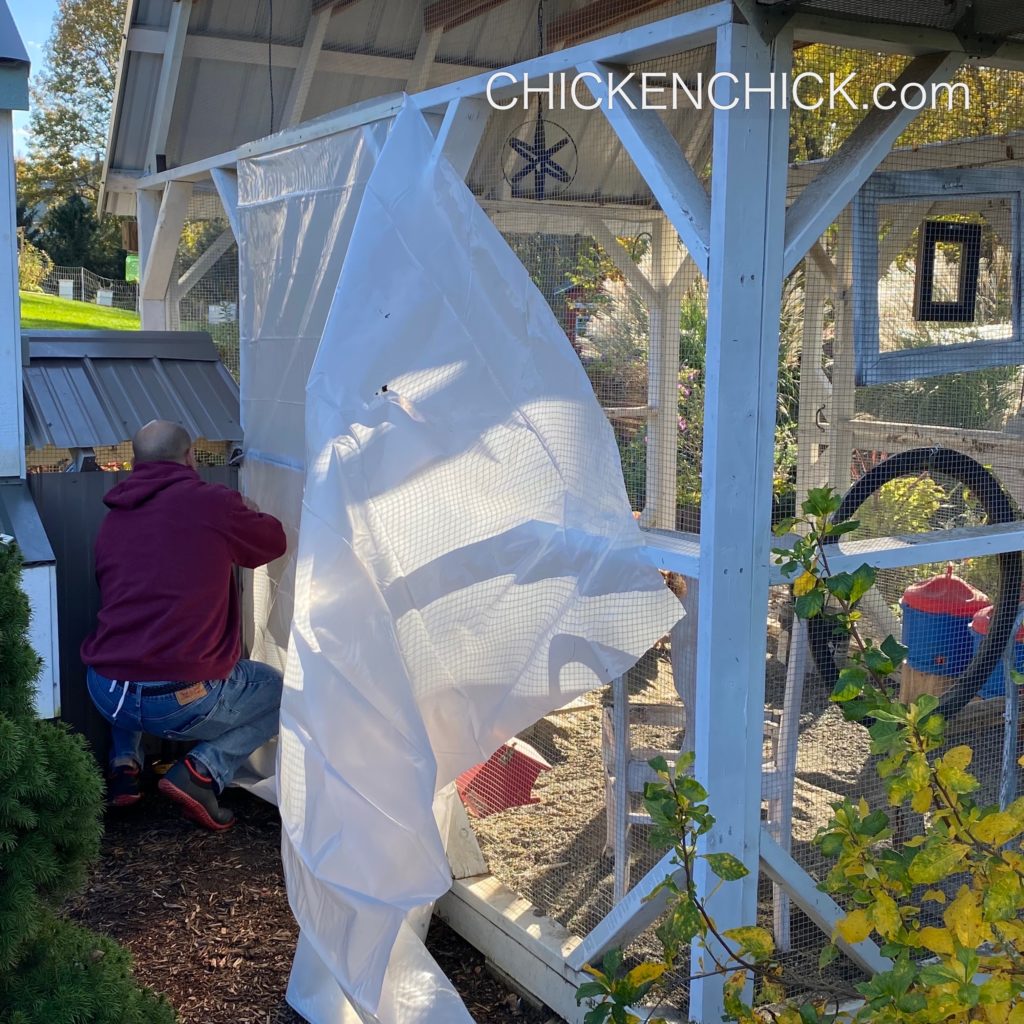
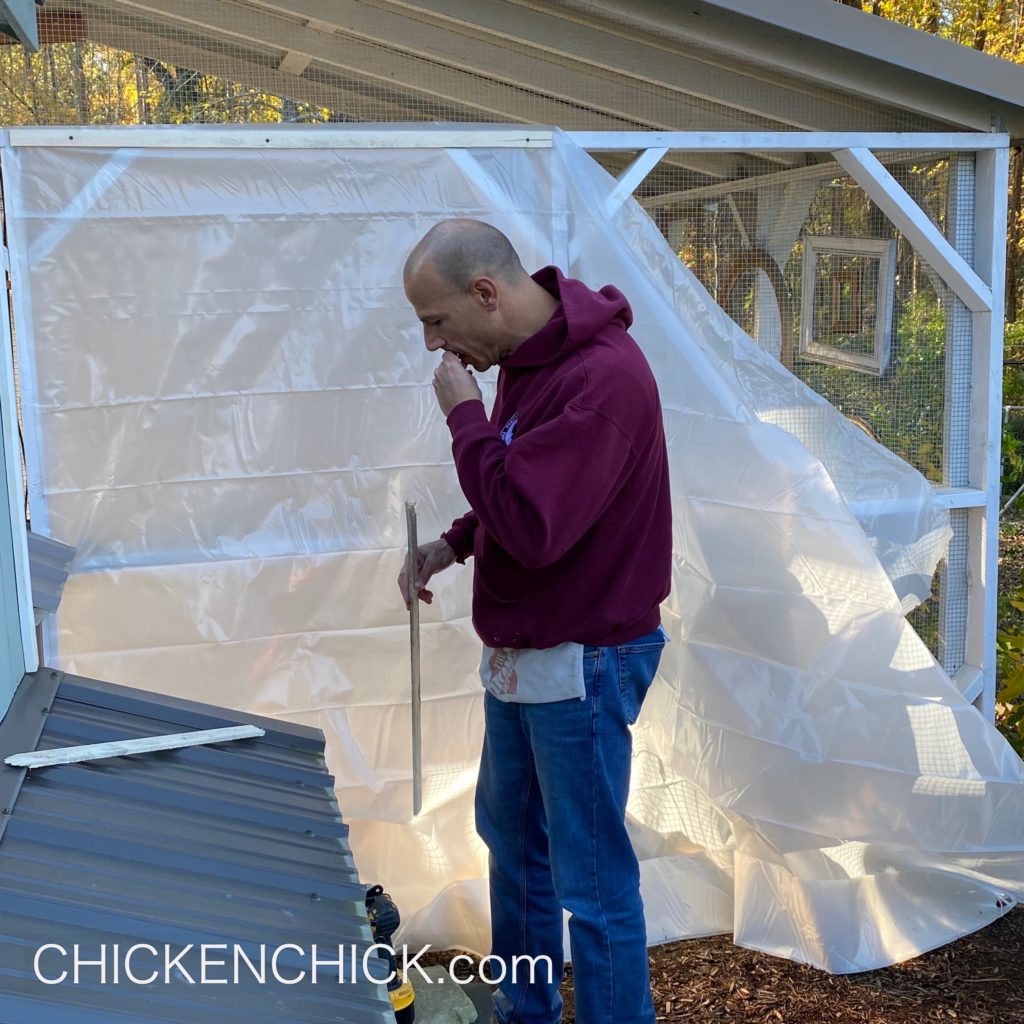
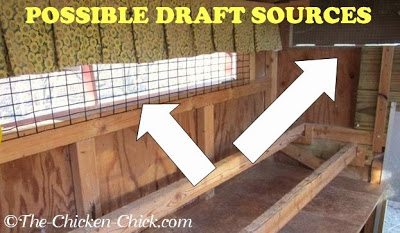
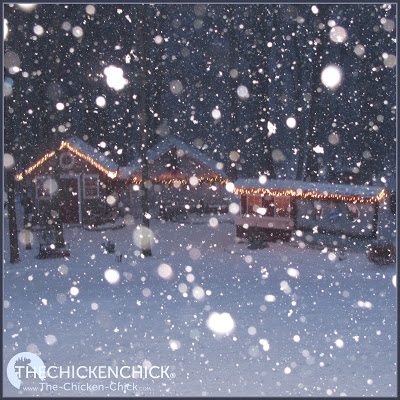
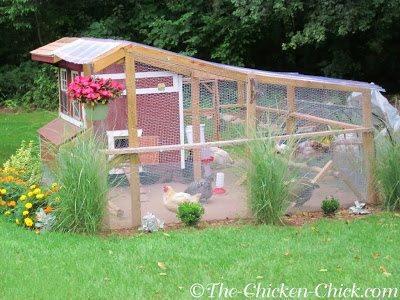
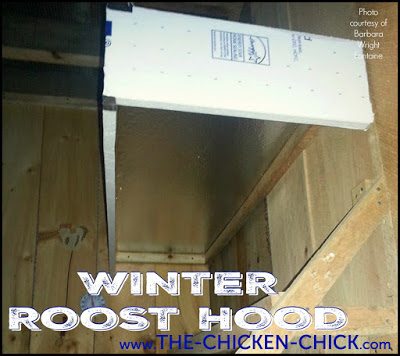
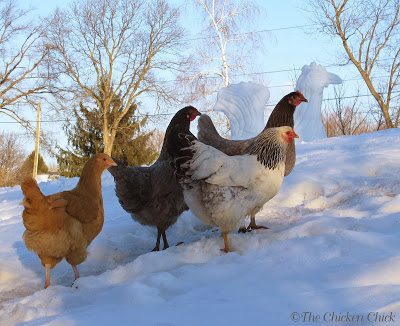
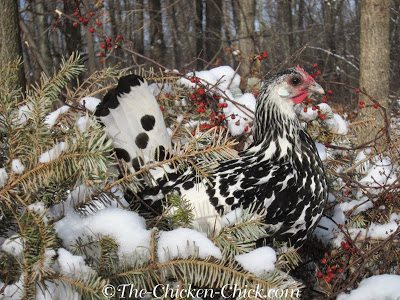
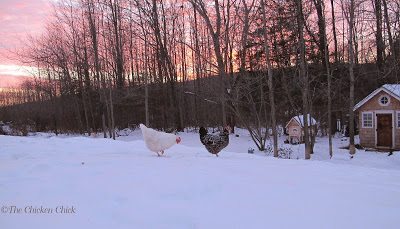
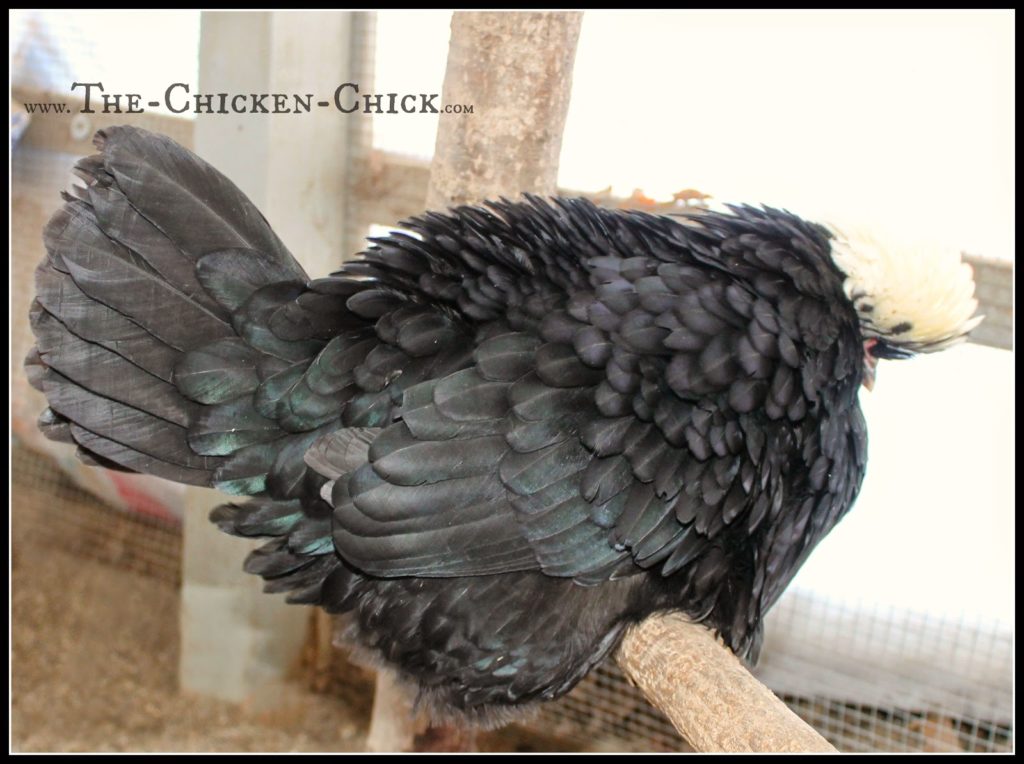
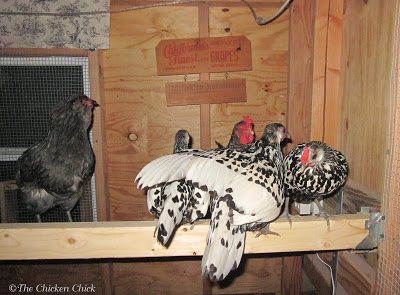
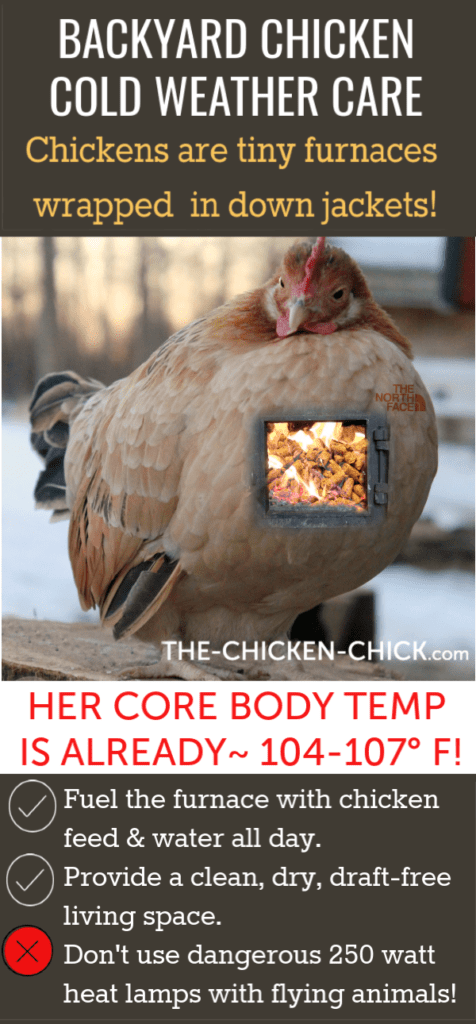
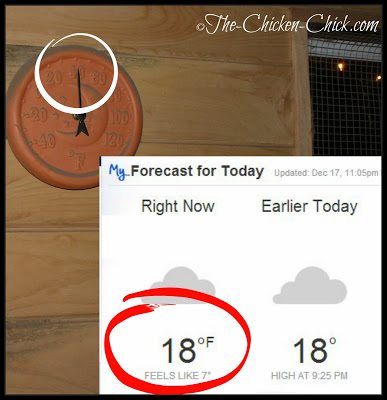
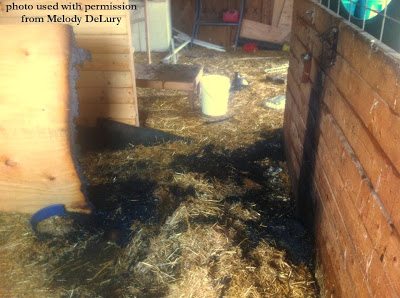
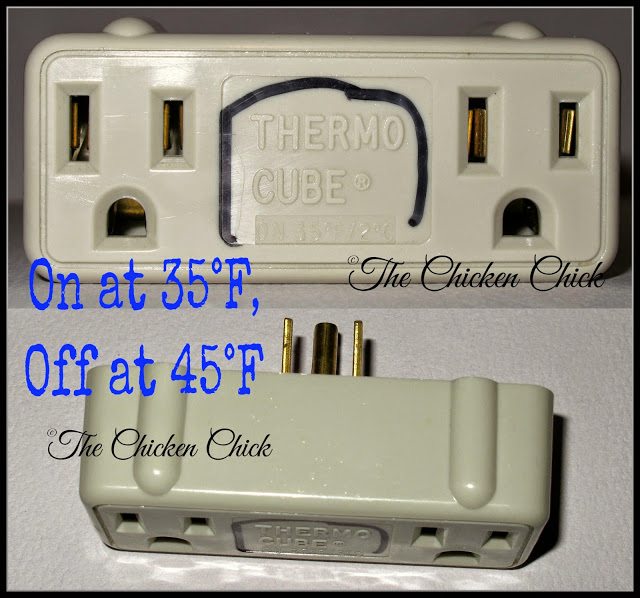
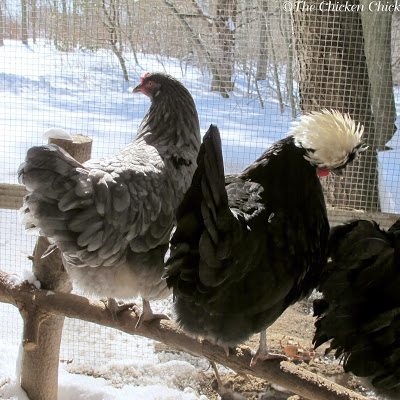

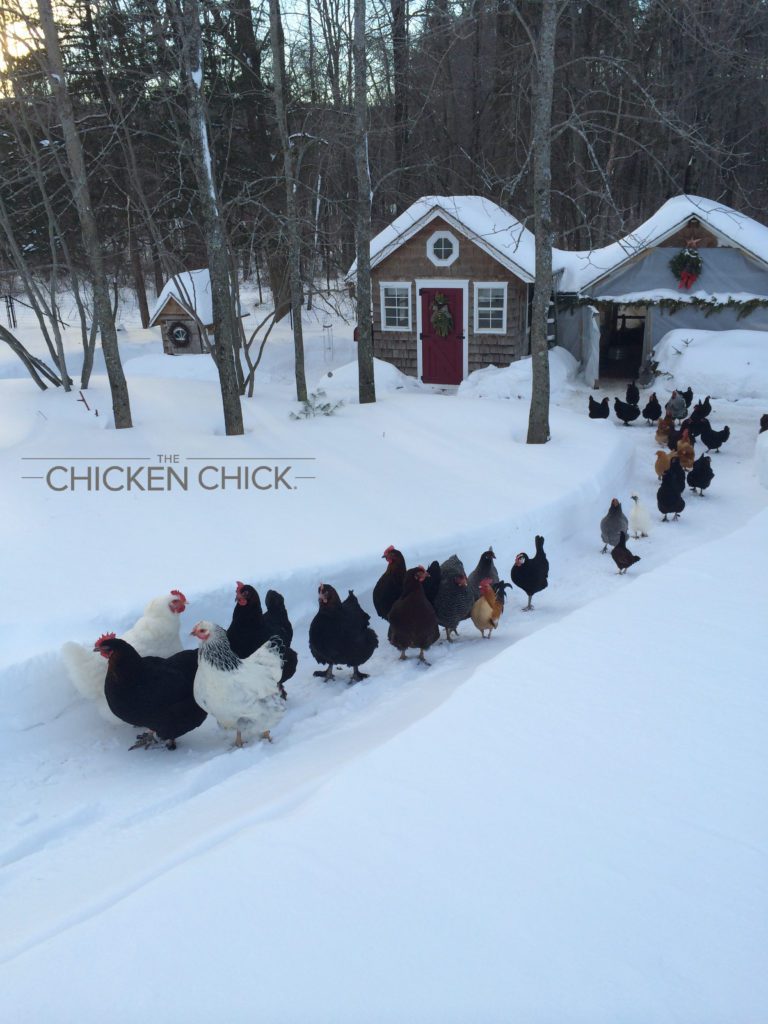
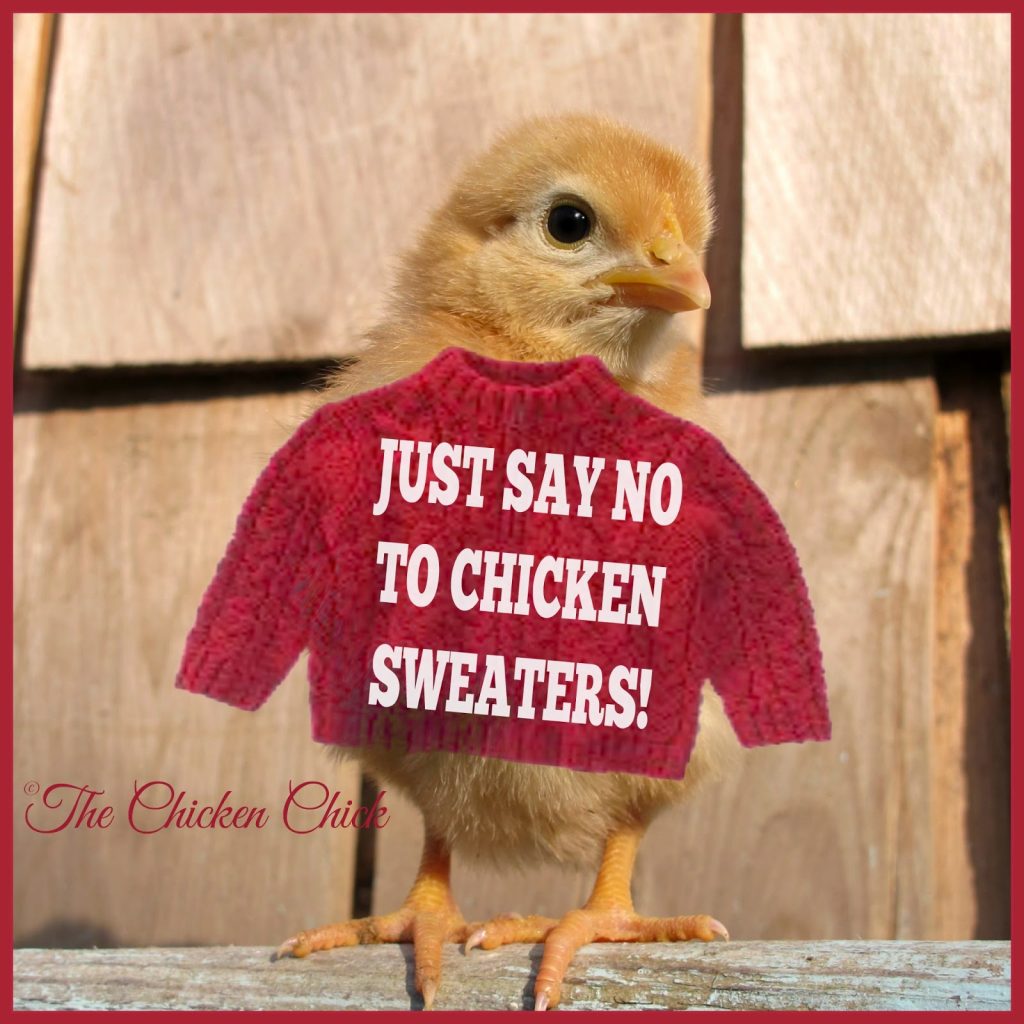
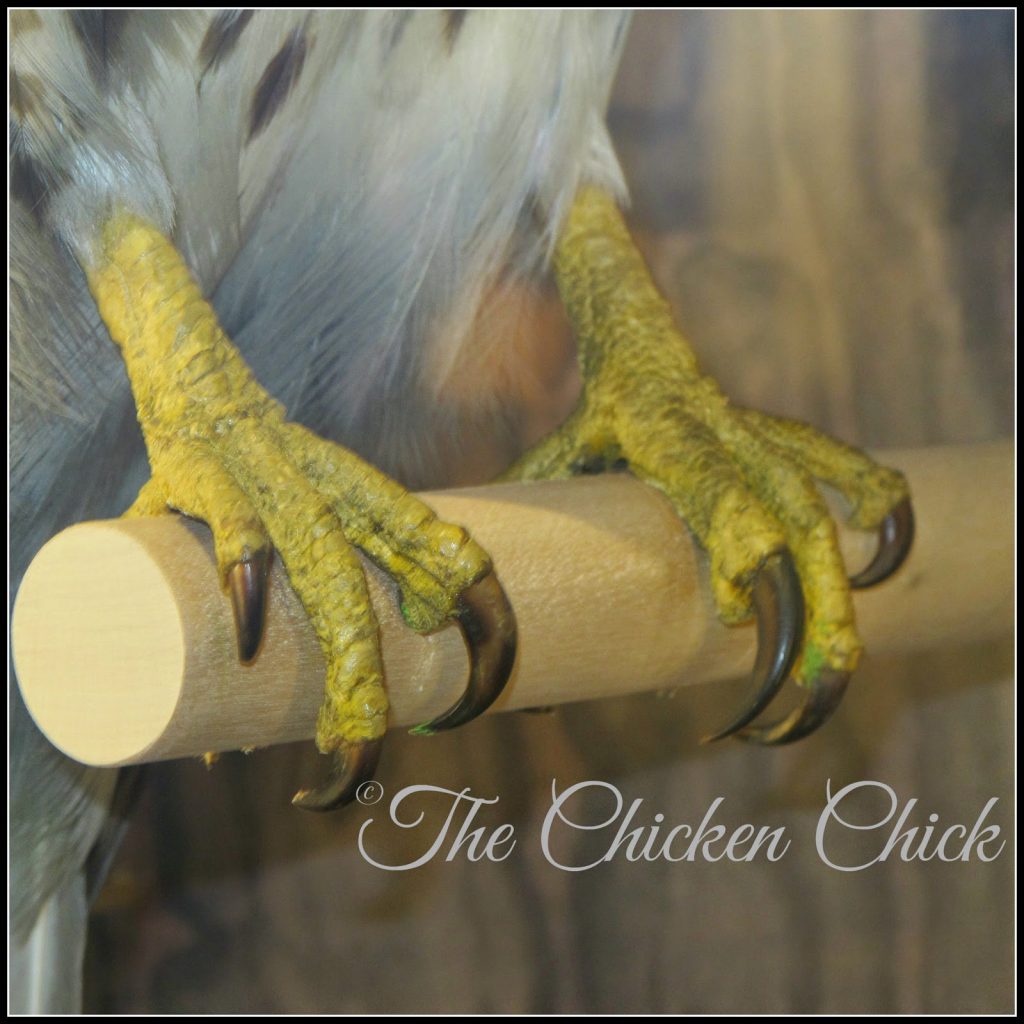
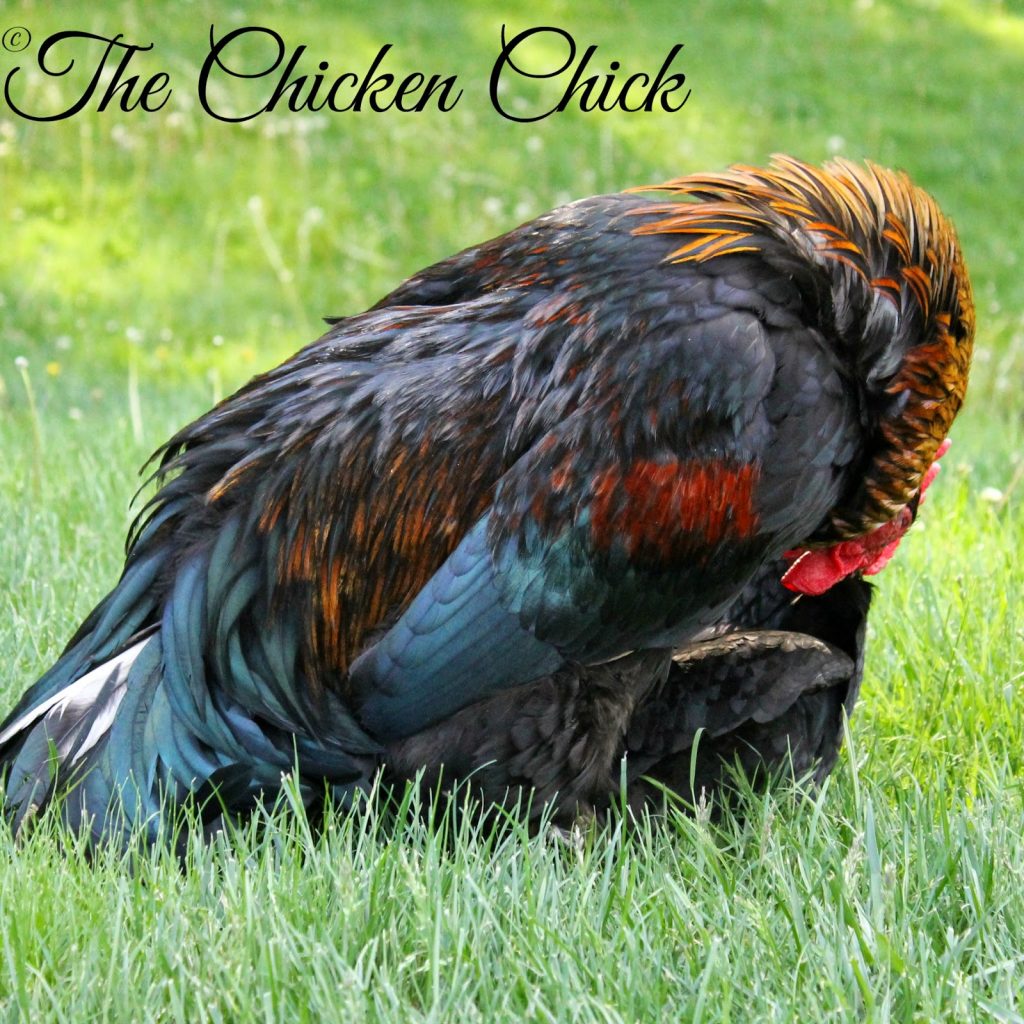


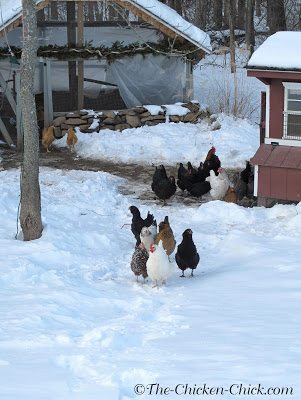
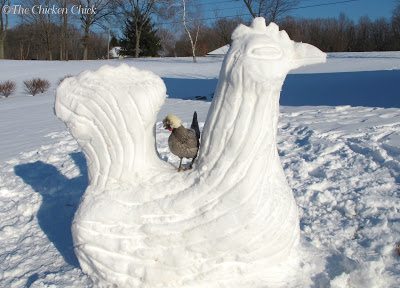
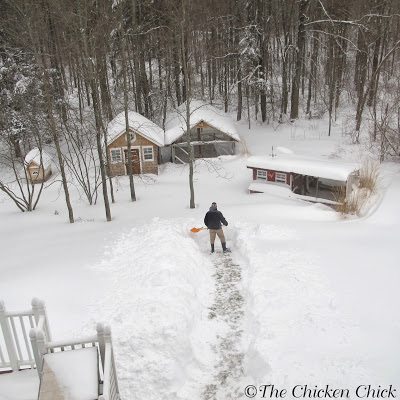

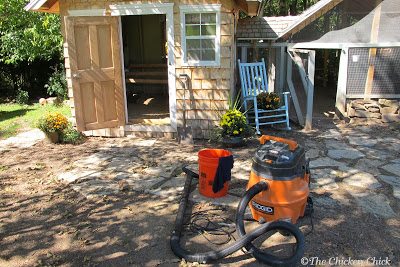
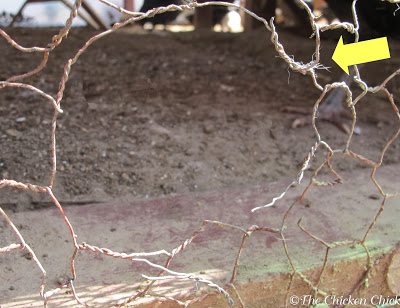
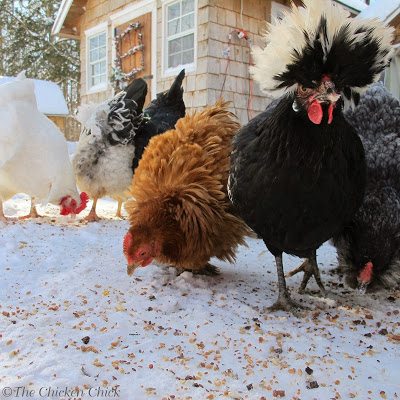
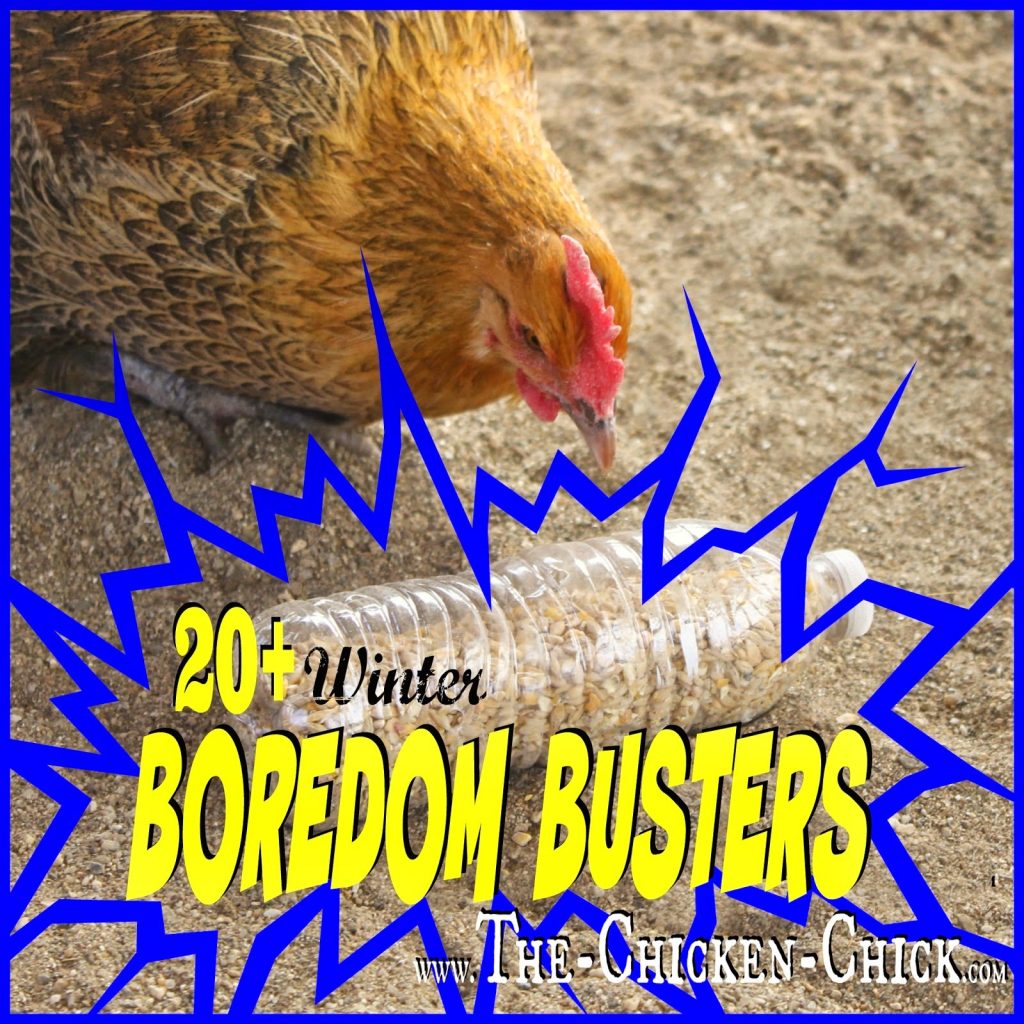

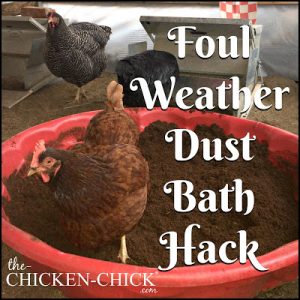

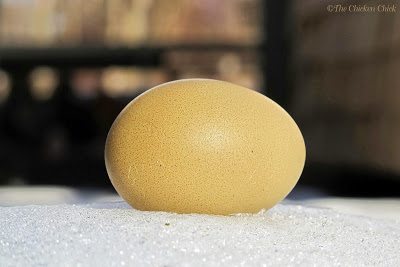
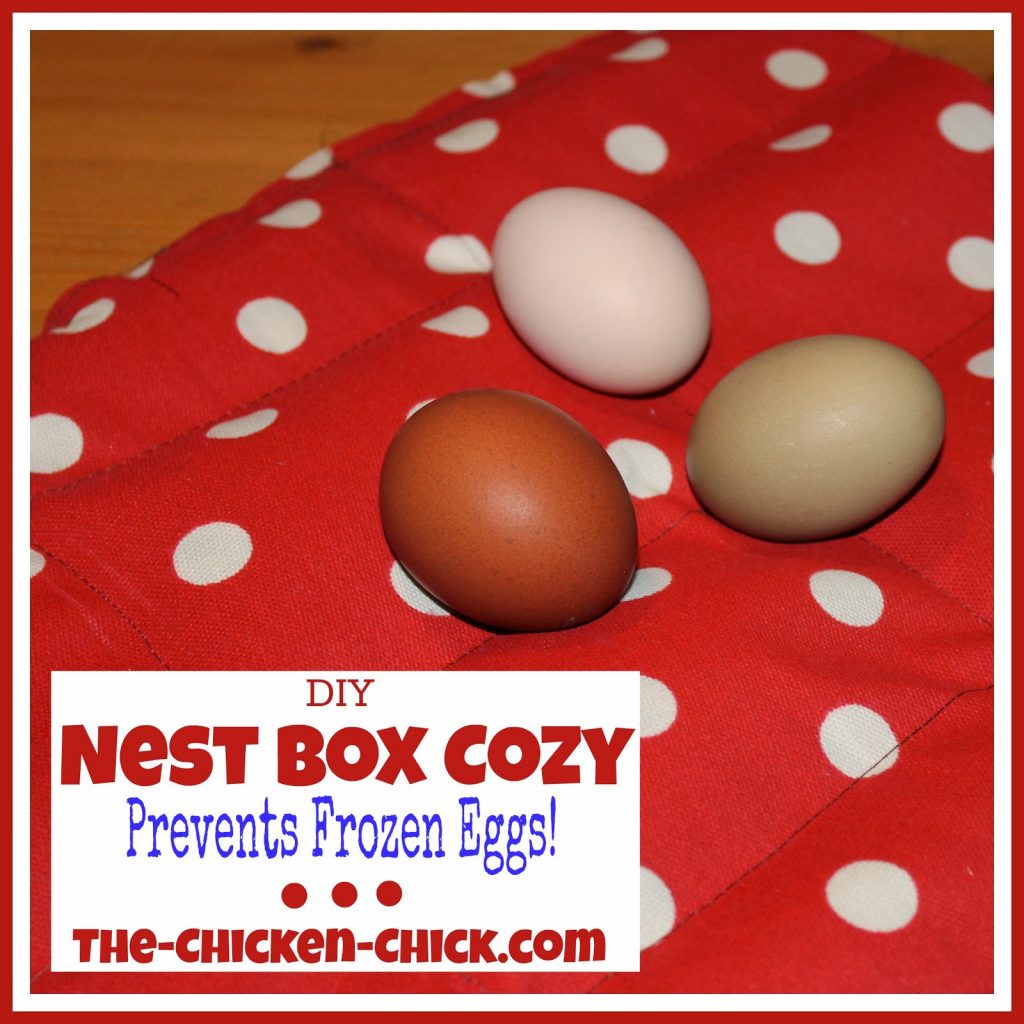
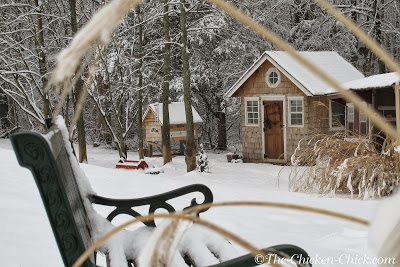
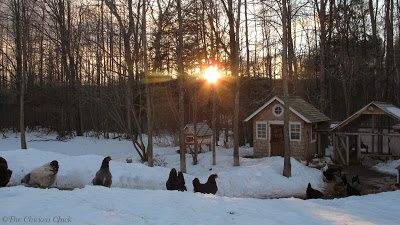
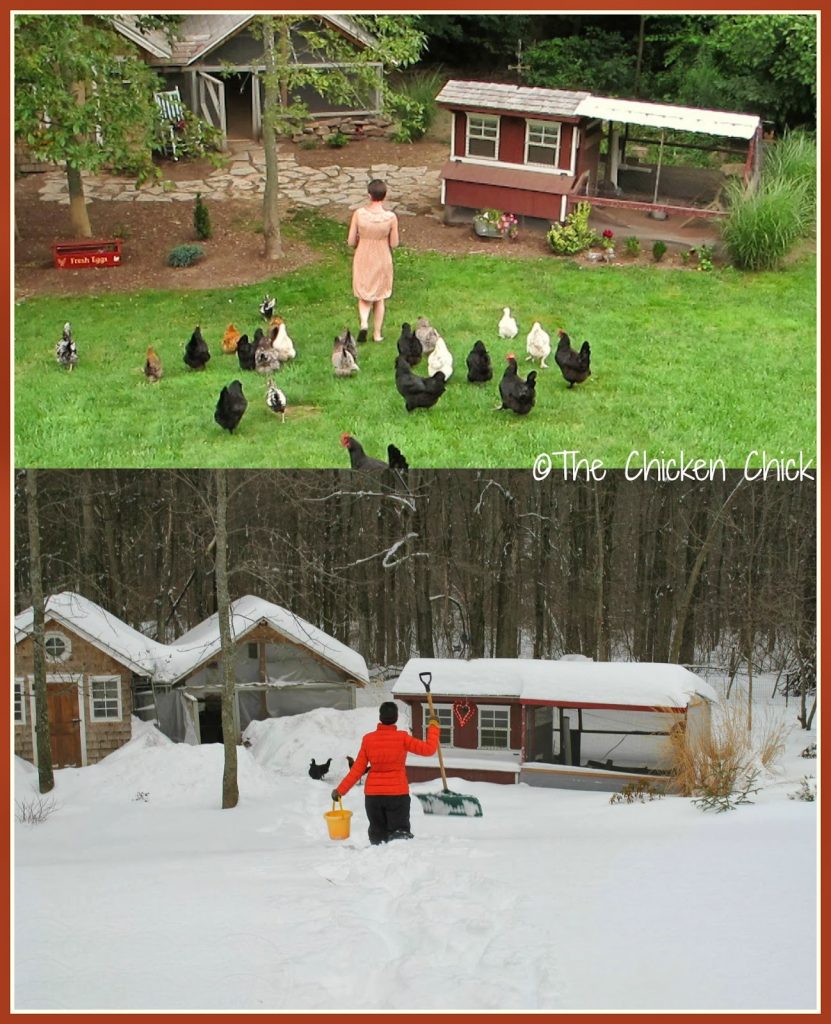
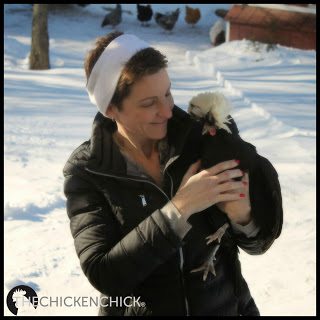

























Entered
I have been trying to tell my husband we do not need to put water in the coop. I will definitely show on this in your article. Thanks.
I dub Mrs. Chicken chick the best for questions answered
Thank you for all the great info you share! Would love to win this for my kids too add to their poultry care kit
This is amazing info! Some of this I knew. Some I didn’t! Thank u! 😊